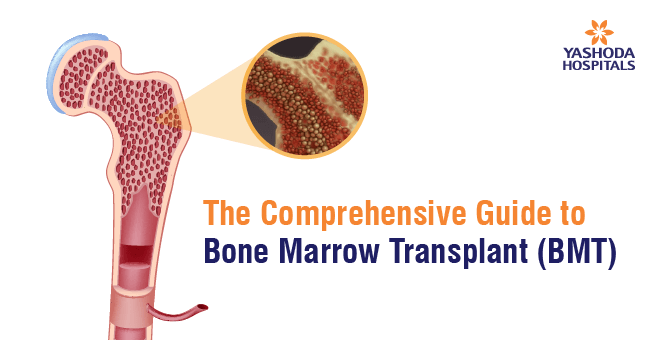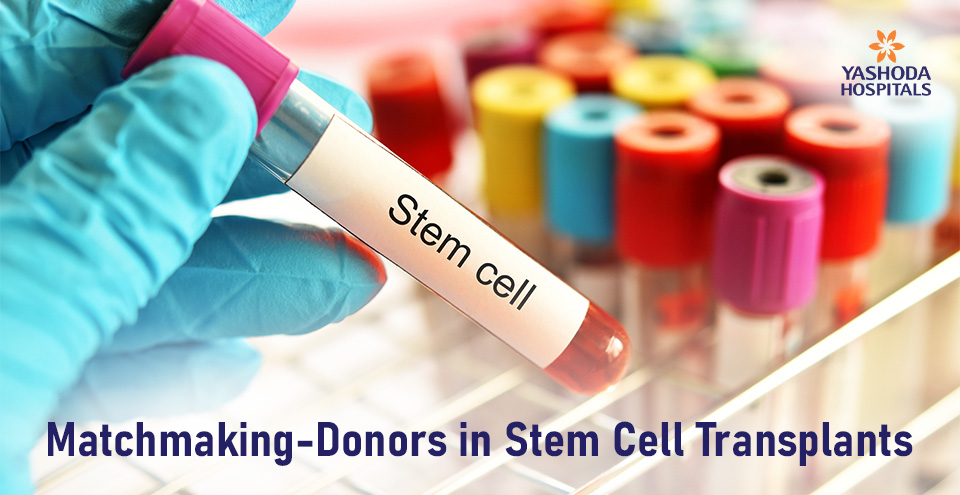Understanding the Different Types of Blood Cancer: Leukemia, Lymphoma, and Myeloma

Blood cancer is a devastating disease that affects countless individuals and families around the world. It is difficult to put into words just how much of an impact a blood cancer diagnosis can have on someone’s life. The shock, fear, and uncertainty that come with such a diagnosis can be overwhelming, both for the patient and their loved ones. In this article, let’s learn more about blood cancers.
What is blood cancer?
Blood cancer, also known as haematological cancer, is an umbrella term that refers to cancer that originates in the blood, bone marrow, or lymphatic system. It affects the production and function of blood cells, leading to an abnormal increase in the number of cancerous cells. These cancerous cells can be divided into three main types: leukaemia, lymphoma, and myeloma.
What are the symptoms of blood cancer?
There are different types of blood cancer, each with its own set of symptoms. However, some common symptoms of blood cancer include:
- Fatigue and weakness
- Frequent infections or fever
- Unexplained weight loss
- Night sweats
- Bone or joint pain
- Swollen lymph nodes, especially in the neck, armpit, or groin
- Bruising or bleeding easily, such as nosebleeds or bleeding gums
- Shortness of breath
- Dizziness or lightheadedness
- Loss of appetite
These symptoms can also be caused by other conditions, and having one or more of these symptoms does not necessarily mean that one has blood cancer. However, if one experiences any of these symptoms, it is recommended to consult a doctor for an accurate diagnosis and appropriate treatment.
Blood Cancer Types
- Leukaemia
Leukaemia is a complex and aggressive blood cancer that arises when the body produces abnormal white blood cells that are not fully developed and cannot perform their intended functions. The overproduction of these immature cells can disrupt the production of healthy red blood cells and platelets, which are essential for carrying oxygen and preventing bleeding, respectively. There are four main types of leukaemia:
- Acute Myeloid Leukaemia (AML)
- Acute Lymphoblastic Leukaemia (ALL)
- Chronic Myeloid Leukaemia (CML)
- Chronic Lymphocytic Leukaemia (CLL)
Leukaemia, a type of blood cancer, can manifest in various symptoms. Some of the most common signs include fatigue, shortness of breath, pale skin, frequent infections, easy bruising or bleeding, swollen lymph nodes, and bone pain. The onset of these symptoms can vary, as they may develop slowly or appear abruptly, depending on the type of leukaemia and the progression of the disease.
Now one might think, how is leukaemia diagnosed? Leukaemia can be diagnosed through various tests and procedures, including:
- Blood tests: Blood tests can help to detect abnormal levels of white blood cells, red blood cells, and platelets, which are often associated with leukaemia.

- Bone marrow biopsy: This test involves the removal of a small sample of bone marrow from the hip bone. The sample is then examined under a microscope to check for the presence of leukaemia cells.
- Imaging tests: Imaging tests such as X-rays, CT scans, and MRI scans can help to detect any abnormalities in the bones, organs, or tissues.
Lumbar puncture: Also known as a spinal tap, this test involves the removal of a small amount of cerebrospinal fluid from the spinal cord. The fluid is then examined for the presence of leukaemia cells.
- Lymphoma
Lymphoma is a complex and serious blood cancer that attacks the lymphatic system and the body’s ability to fight off harmful infections and diseases. This type of cancer occurs when the white blood cells, called lymphocytes, start to behave abnormally and multiply uncontrollably. There are two main types of lymphoma: Hodgkin’s lymphoma and non-Hodgkin’s lymphoma, and each of these can be further classified into subtypes based on the specific type of lymphocyte affected.
Lymphoma can sometimes be asymptomatic in its early stages. However, some individuals may experience symptoms that include enlarged lymph nodes, fatigue, night sweats, unexplained weight loss, fever, and itching.
So, with such complexity can lymphoma be cured? The prognosis for lymphoma depends on the type and stage of cancer. Hodgkin’s lymphoma has a high cure rate, with up to 90% of patients achieving long-term remission. Non-Hodgkin’s lymphoma is a more diverse group of cancers with varying cure rates, but many cases can be treated successfully with chemotherapy, radiation therapy, or stem cell transplantation.
- Myeloma
Myeloma is a rare type of cancer, and it usually affects people over the age of 60. It is a type of blood cancer that affects the plasma cells in the bone marrow. Plasma cells are responsible for producing antibodies that help fight infections. Myeloma cells produce abnormal proteins that can cause damage to the bones, kidneys, and other organs.
Symptoms of myeloma can vary depending on the stage and severity of the cancer. Some common symptoms include bone pain, especially in the back, ribs, and hips, fatigue, recurrent infections, easy bruising and bleeding, unexplained weight loss, increased thirst and urination, nausea and vomiting, constipation or diarrhoea, and confusion and memory loss.
Treatment of blood cancer
Now the question arises, “is blood cancer curable”? The treatment of blood cancer varies depending on the type and stage of cancer, the age and overall health of the patient, and other factors. The main treatment options for blood cancer include:
- Chemotherapy: It is a common treatment for blood cancer. It involves the use of drugs to kill cancer cells. Chemotherapy drugs are usually given intravenously or orally.

- Radiation therapy: It uses high-energy radiation to kill cancer cells. It can be delivered externally, where the radiation is directed at the cancerous tumour from outside the body, or internally, where radioactive material is placed inside the body near the cancerous tumour.
- Immunotherapy: It is a type of treatment that boosts the immune system’s ability to fight cancer. It involves the use of drugs that stimulate the immune system to attack cancer cells.
- Targeted therapy: It is a type of treatment that targets specific proteins or genes that are involved in the growth and spread of cancer cells. It involves the use of drugs that interfere with the signals that cancer cells need to grow and divide.
- Stem cell transplantation: It is a treatment that involves replacing the patient’s diseased bone marrow with healthy stem cells. The healthy stem cells can be obtained from the patient’s own body (autologous transplantation) or from a donor (allogeneic transplantation).
- Supportive care: In addition to these treatments, patients with blood cancer may also receive supportive care to manage symptoms and side effects. Supportive care can include pain management, anti-nausea medication, blood transfusions, and antibiotics.
The treatment of blood cancer depends on various factors, and it also involves a combination of treatments such as chemotherapy, radiation therapy, immunotherapy, targeted therapy, and stem cell transplantation.
Is blood cancer hereditary?
It can be concerning to learn that certain types of blood cancer can run in families, but having a family history does not always mean that a person will develop the disease. It is crucial to understand the potential risk factors for blood cancer and take proactive steps to reduce the risk of developing it.
By maintaining a healthy lifestyle, getting vaccinated, and seeking prompt medical attention for infections, individuals can help to protect their health and well-being. Also, regular check-ups with a doctor can detect early signs of blood cancer, providing an opportunity for timely treatment and management.
Did you know men have a 40.5% chance of having cancer at some point in their lives?
How to prevent blood cancer?
It can be challenging to prevent blood cancer entirely, but there are several steps that people can take to reduce their risk and promote overall health. Here are some ways that could help in the prevention of blood cancer:
- Avoiding exposure to harmful chemicals: Workers in industries with exposure to chemicals such as benzene and formaldehyde should take precautions to limit their exposure to these carcinogens.
- Maintaining a healthy lifestyle: Eating a balanced diet, engaging in regular exercise, and avoiding tobacco and excessive alcohol consumption can help to reduce the risk of developing blood cancer.

- Getting vaccinated: Vaccinations can prevent infections that increase the risk of developing blood cancer, such as hepatitis B and human papillomavirus (HPV).
- Detecting and treating infections: Chronic infections such as hepatitis C and HIV can increase the risk of developing blood cancer. Seeking prompt medical attention for infections can help to reduce the risk.
- Receiving regular check-ups: Regular check-ups with a doctor can detect early signs of blood cancer and other health conditions. Early detection and treatment can lead to better outcomes and improved quality of life.
By taking these proactive measures, individuals can help reduce their risk of developing blood cancer and maintain their overall health and well-being.
Blood cancer is a complex and multifaceted disease that can impact the blood, bone marrow, and lymphatic systems, requiring personalised treatment plans ranging from curative to supportive care. A diagnosis of blood cancer can be emotionally overwhelming, but advancements in medical research and treatment offer hope for managing the condition and improving quality of life.
Alongside medical support, providing emotional support and understanding to patients and their loved ones throughout their journey is essential. By taking proactive measures, such as adopting a healthy lifestyle and promptly addressing infections, we can decrease the likelihood of developing this complex disease. By working together to continue advancing research, treatment, and prevention, we can enhance our understanding of blood cancer and improve outcomes for those affected.
References:
- Blood Cancers
https://www.hematology.org/education/patients/blood-cancer - Blood cancer
https://www.cancercenter.com/blood-cancers - Blood Cancer
https://my.clevelandclinic.org/health/diseases/22883-blood-cancer - 10 Types of Common Cancers in Men (With Screening)
https://www.verywellhealth.com/top-cancers-causing-death-in-men
About Author –
Dr. Ganesh Jaishetwar, Consultant Hematologist, Hemato-Oncologist & Bone Marrow Transplant Physician, Yashoda Hospital, Hyderabad
MD, DM (Clinical Hematology), PDF-BMT (TMC), MACP








 Appointment
Appointment WhatsApp
WhatsApp Call
Call More
More

